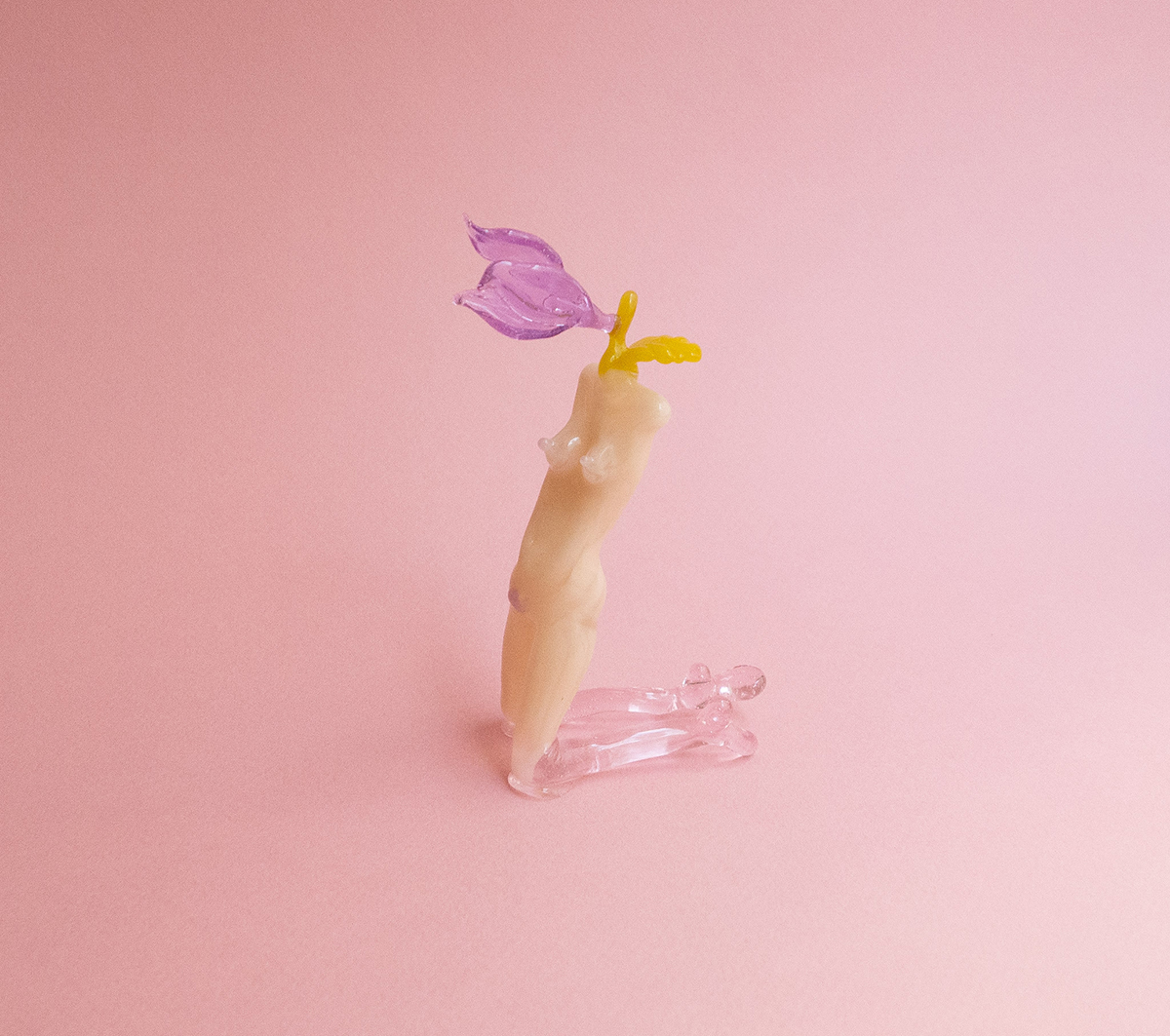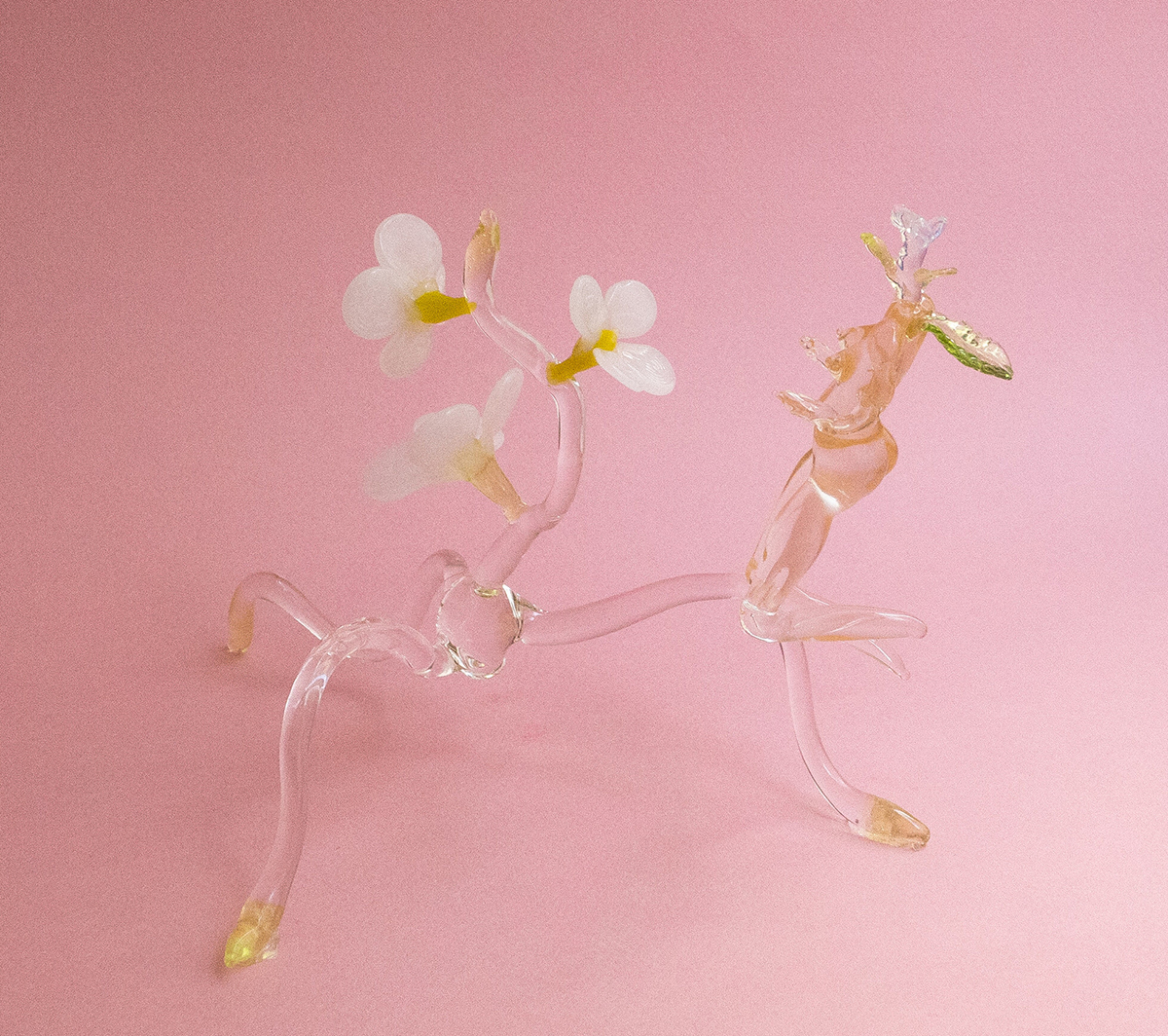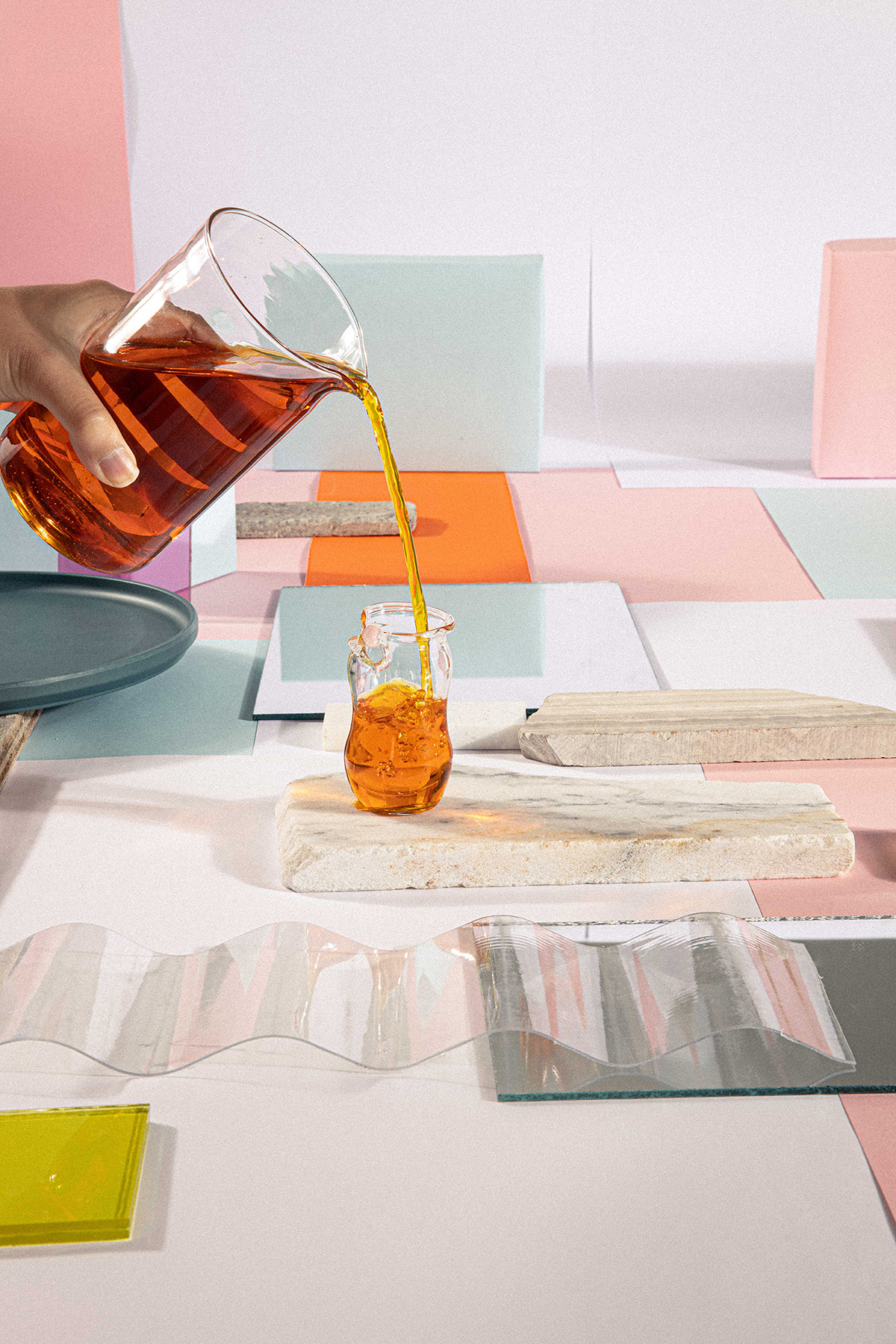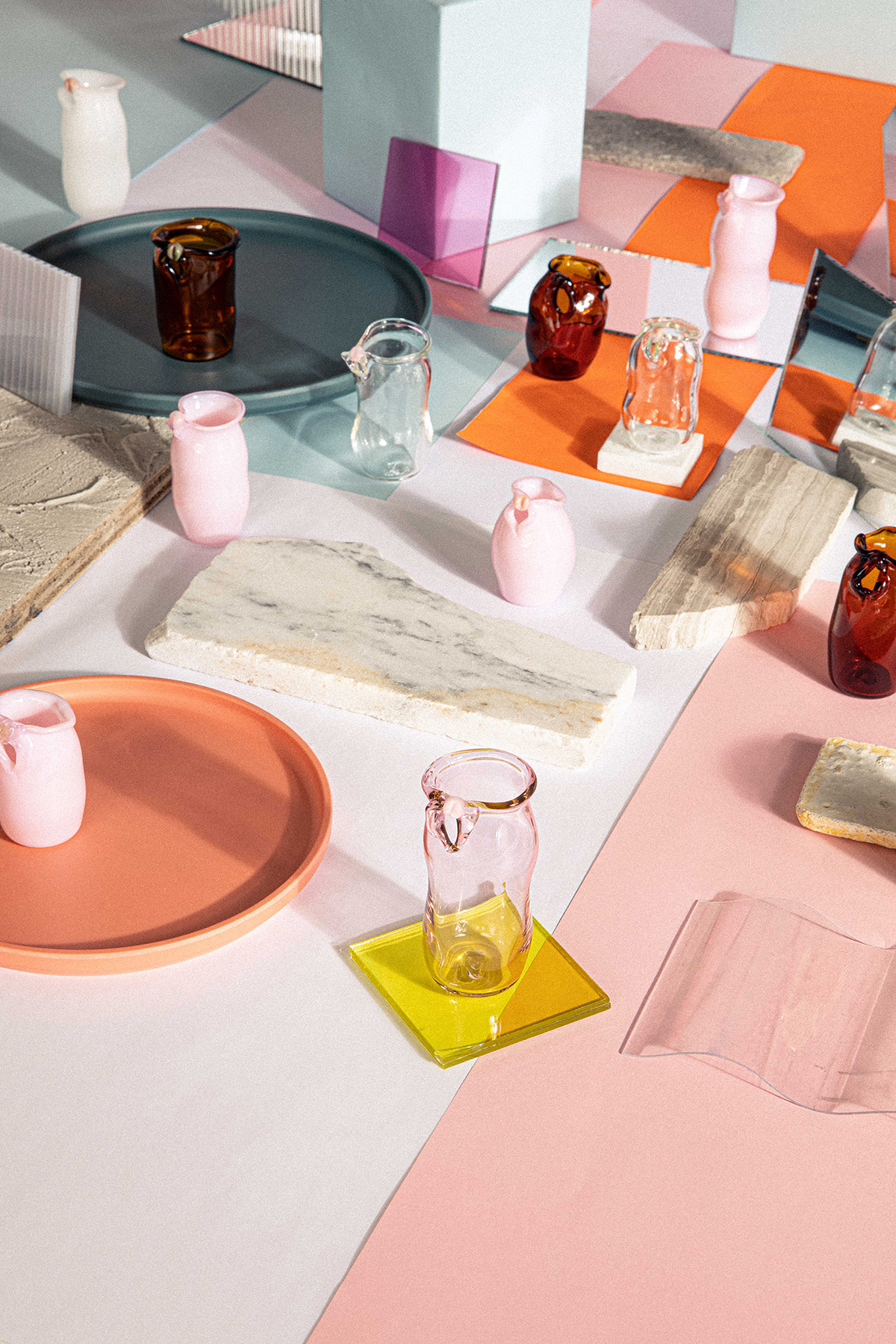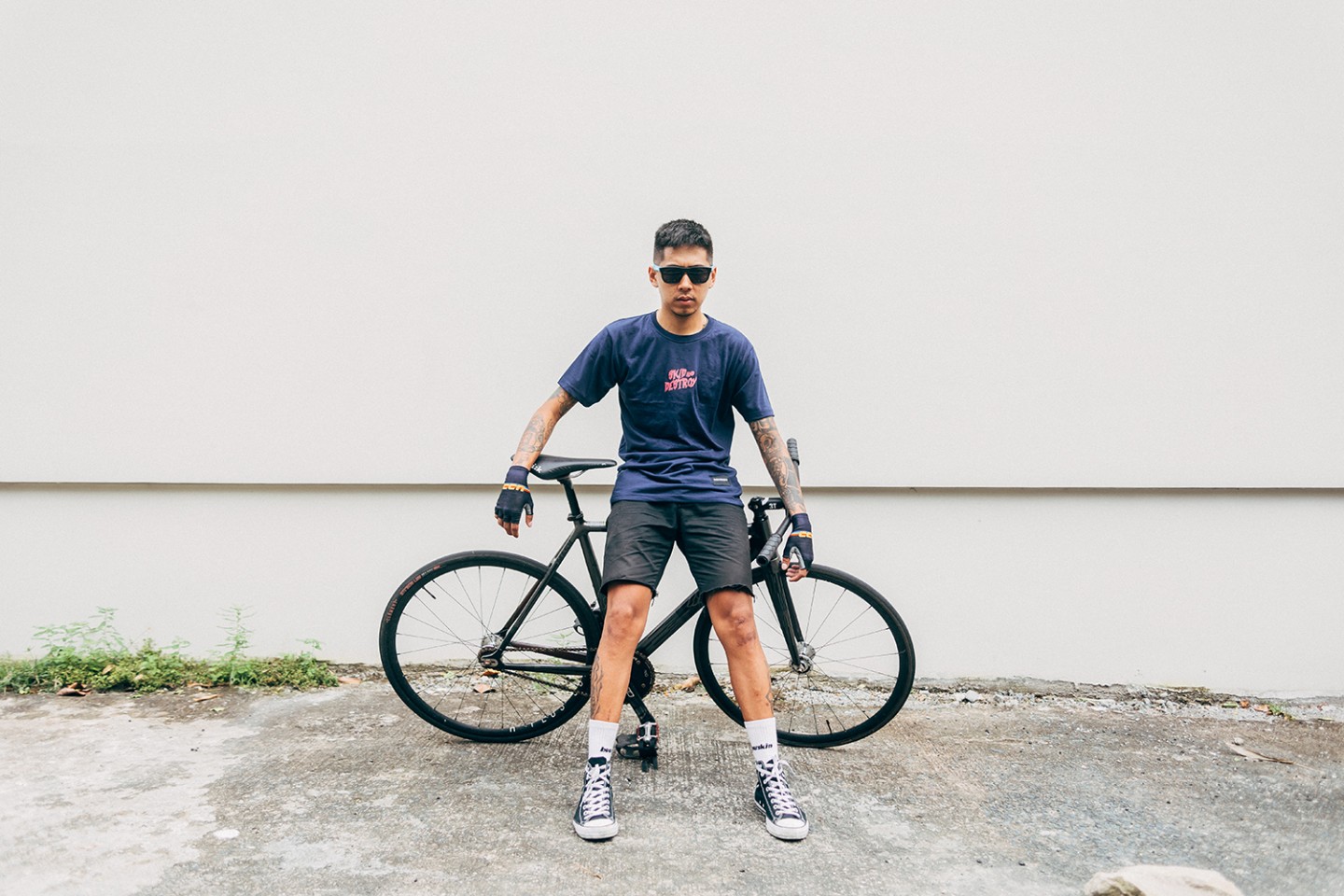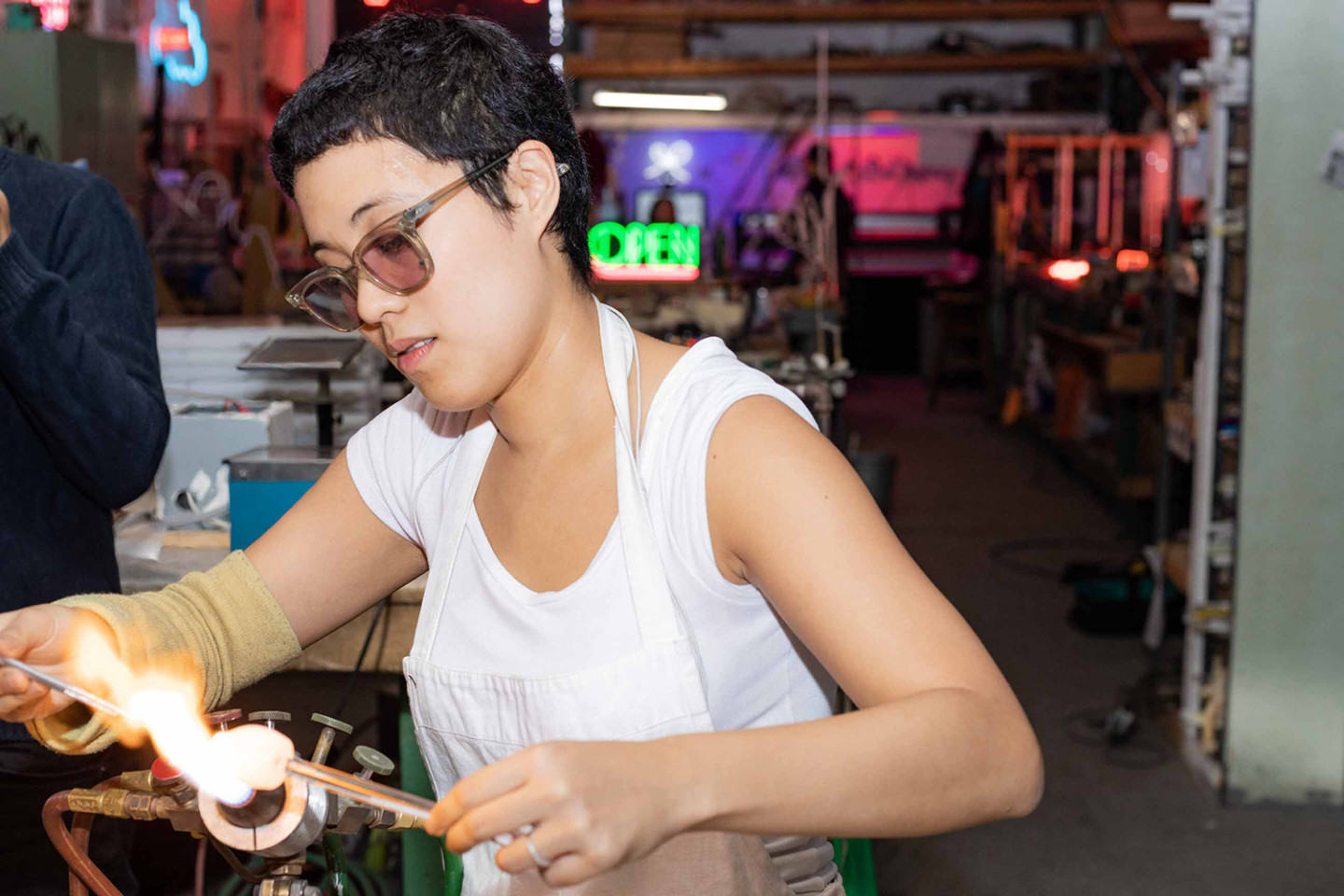
What does it truly mean to be feminine?
When the unfavorable weight of historical baggage strenuously grips our identities as women, freeing one’s self from the vast array of flat, problematic tropes feels increasingly (and irritatingly) burdensome. Funny how I need to state the obvious here, but women are in dire need of complex representation in film and in media—most especially through art; as we are multidimensional thinking, feeling human beings ourselves. How can we begin exploring our identity within the safe, fluid spaces of discourse and conversation? In which conditions are we authentically empowered? What of our layered past must be quarried, cherished, or let go of? In this rebirth of Venus, women artists are collectively putting fingers on a soft quest to heal the pangs of womanhood.
One Manhattan-based Filipina artist happens to be one of them;
Goldie Poblador is an alchemist—In the scenery of her studio float tiny embers that prettily splinter from the wellspring glow of flamework. Goldie blows glass as if she would petals off the palm of her hand: delicately and sensual. (In case you haven’t been acquainted with the medium, Glassblowing is the art of shaping a mass of molten or heat-softened glass into a vessel or shape—as exhibited in Netflix’s “Blown Away.”)
Such a medium isn’t typically pursued as its mastery demands a steep learning curve and exceptional craftsmanship—a navigational process that has required the artist tremendous amounts of her patience and time. Already surpassing a decade into glasswork, Goldie has displayed a great deal of tenacity simply by her choice of medium. It’s been a rough and tumble journey for the Filipina artist who touches upon the struggles of being an immigrant. Chime in as we explore her thoughts on feminism alongside what following a dream wholeheartedly entails.
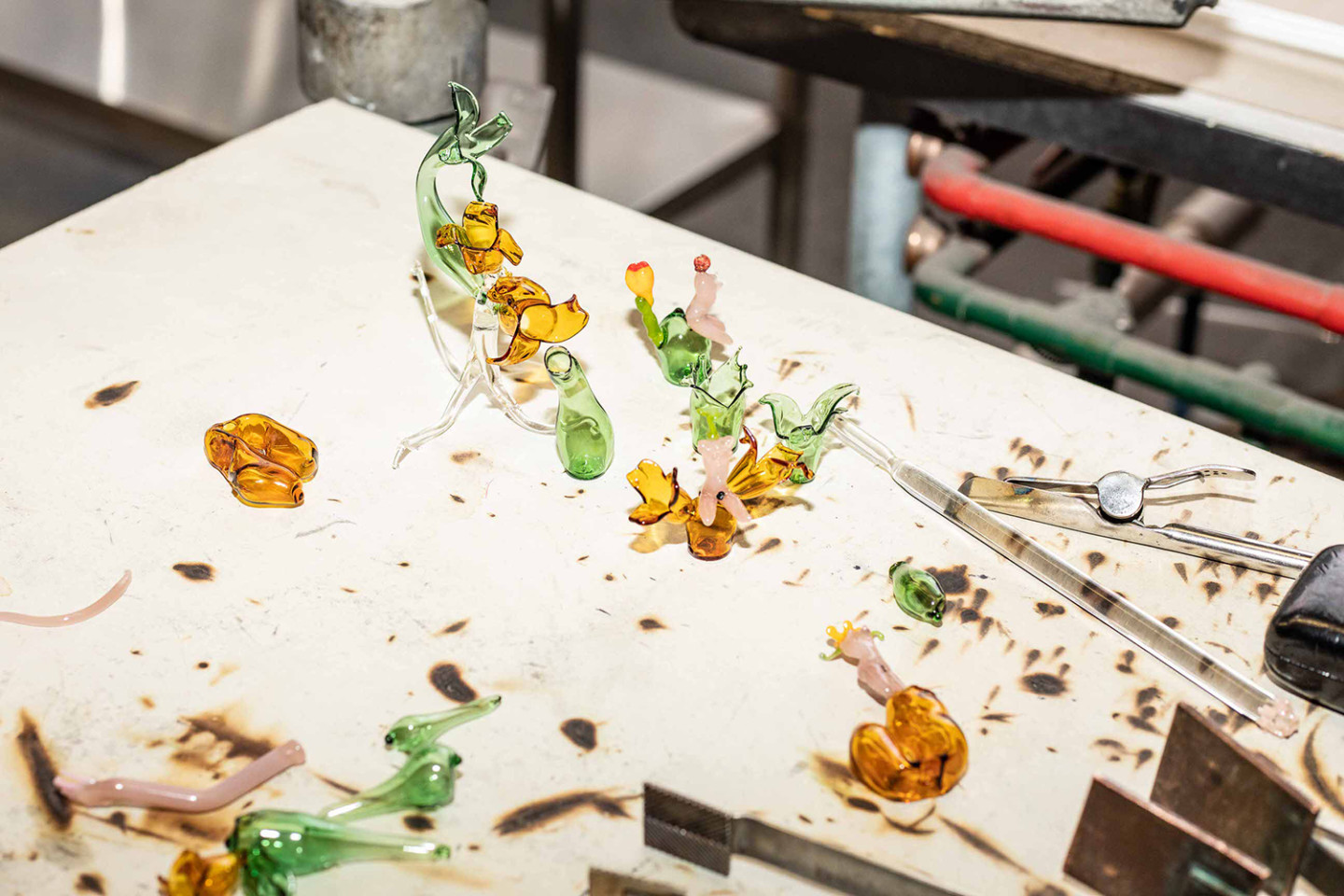
The term “feminist” (or feminism) is a constantly milked buzzword in the space of pop culture: advertisers, social media influencers, and celebrities oftentimes parade the word as a means to further brand relevance; as to whether the term is expressed meaningfully or thrown around for the sake of mere clout is something I’m particularly skeptical about.
“The feminine,” which you also refer to as ‘the feeling body’ is essentially the heart and spirit of your practice; can you maybe recontextualize the word for us based on your intentions as an artist? What does “feminism” mean to you?
It’s true, it has been used to sell us products. It’s good to be discerning when we see or hear the word feminism, but I ultimately think it boils down to authenticity and whether the voice behind the buzzwords is authentic or not. I believe each person has a personal relationship and understanding of what feminism is, and it’s up to us to think about what it means for us individually.
Besides addressing feminism and femininity in the context of being a woman, I’m also interested in the feminine body that I believe every person has. My definition of the feminine has roots in ancient texts (Vedic, Buddhist, Taoist, etc.)—That state wherein every person has both a feminine and masculine aspect of their being. In neuroscience, it is believed that the left side of the brain is responsible for analytical and logical thinking, while the right side of the brain houses that which is intuitive.
This right side, which is responsible for our emotions and creativity, is what is often seen as the feminine side—that which I’m interested in awakening through my work. It can easily be misconstrued as being passive in nature, but I believe that one can have both agency and intuition—that side of ourselves that isn’t so bound by logic. I believe jazz musicians touched on this when they were talking about improvisation: letting the music go where it can without having to label it.
The feminine is reflected through the mediums I’ve chosen to work with through the years. I have an interdisciplinary practice involving glass sculpture, video, performance, and installation – all mediums I approach intuitively. I enjoy mediums that flow and talk back to me while awakening the senses. Our senses are at the root of our feeling body, which I believe we have dulled down and replaced with screens. This is why sculpture, scent, installation, and performance excite me—they’re mediums that hold presence within a space. The body is at the root of my practice; I cannot remove myself from the body I was given—from the experiences I’ve had as a result of being a woman. Feminism is the simple belief that women deserve equality; while intersectional feminism addresses how issues of race and gender inequality overlap. One can read about the different waves of feminism and how they’ve shaped the women we’ve become today—but I still believe there’s work to be done. As a Filipina woman, I’ve found it necessary to make feminism a primary theme in my art practice because I cannot separate this from the conditions of my everyday life. I never sat well with being told what to do, how to dress, or what to think. I grew up in Manila and have lived in the US for seven years, so I believe I’m connected to both worlds. I’ve been on the receiving end of both racist and misogynist acts, so I believe that it’s important for women (most especially of color) to have a platform. We need our stories represented—not excluding all the other minorities who’ve felt left out in the history of art and storytelling.
We must write our own stories and rewrite versions of the existing ones in order to create agency and empowerment. We’ve had enough limiting beliefs that dissuade us from embracing our strength.
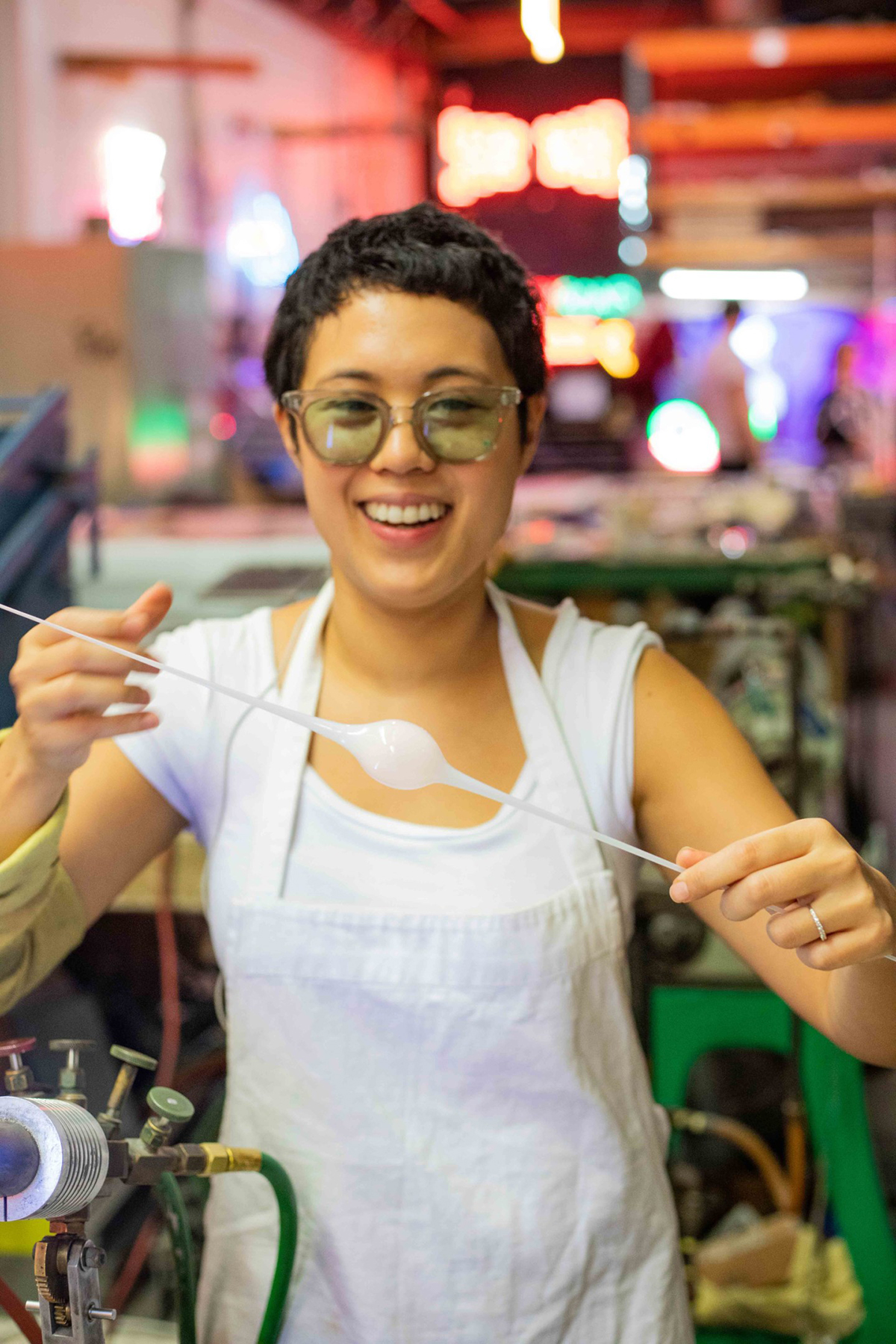
Studio Images — Anna Frumenti
Do you think terms like feminism or feminist are unavoidably soft and relative, contingent on the unique woman expressing herself? Do you personally believe that there are right or wrong ways to applying these words?
What a great question. I do believe that feminism can be used to sell us things that don’t necessarily have our best interests in mind. It is also a word that can be used as a façade or band-aid for companies or leaders that have ulterior motives. Any idea can be used with ill intentions, so I do believe that we need to be careful with what we consume and read. I’ve definitely sensed this wrong way of doing things when ads specifically target women without being reflective of our diversity. Even within feminist discourse, there is much room for debate; but I think it boils down to educating yourself as best you can, and then applying that which rings true for you. You don’t need a unique or radical voice to be a feminist; even something as simple as taking an hour for yourself when you’ve been accustomed to taking care of others all day can serve as a feminist act. Anyone who has ever fought for a salary raise or has spoken out against sexual violence are very much in the heart of feminist thought.
I’m still so unsure of what feminism means to me. Maybe it’s the baggage of cancel culture that prevents me from using the word—I’m afraid of misrepresenting myself; I don’t think I’ve done enough research to fully grasp its various associations. What is your take on the matter as a feminist who expresses her attitudes through art?
I think being unsure, and constantly asking ourselves these questions is the right way to move forward. Nobody I admire claims to know everything with certainty; I certainly know that I have a lot more to learn.
But I do believe that the kind of work each artist creates is unique to his or her voice and life experience. Not everyone will be pulled to create radical feminist work and that doesn’t mean that they aren’t within themselves, a feminist. I think that just following one’s desired life path could be a radical act in and of itself.
When I was in graduate school, I did a lot of research: I found myself drawn to unapologetic female artists like Ana Mendieta, Sarah Lucas, Carolee Schneeman, Marilyn Minter, and Kara Walker. When I see or read or listen to an amazing woman artist, it’s like I’m being mentored in some way. I love the works of Anaïs Nin, Audre Lorde, Simone de Beauvoir, Ninotchka Rosca, and many others. I guess I ended up creating the kind of work I make, because of the strength and wisdom that I’ve found through other women artists. I’ve been encouraged to find my own voice through their work—even if that voice is angry or misbehaving.
It is indeed frightening to be misrepresented; this is why safe spaces that encourage women and other oppressed groups in society to explore their voices, must exist. I think the fear of using one’s voice stems from the possibility of being misunderstood; or at worst: understood, and then ridiculed. This is all related to the inner sense of shame we as women have been conditioned to feel in our bodies—that same shame that leads us to doubt our abilities to lead and be free. It’s even more difficult for women of color alongside those from the developing world to come into that feeling of agency and empowerment — especially at a time when women of color have become constant targets for acts of violence. Women should be free to create images and experiences that they want to see without censorship; without that fear of being judged. I also think it’s perfectly fine to be searching for your own understanding of feminism and its relationship to your work and life. I too am still learning.
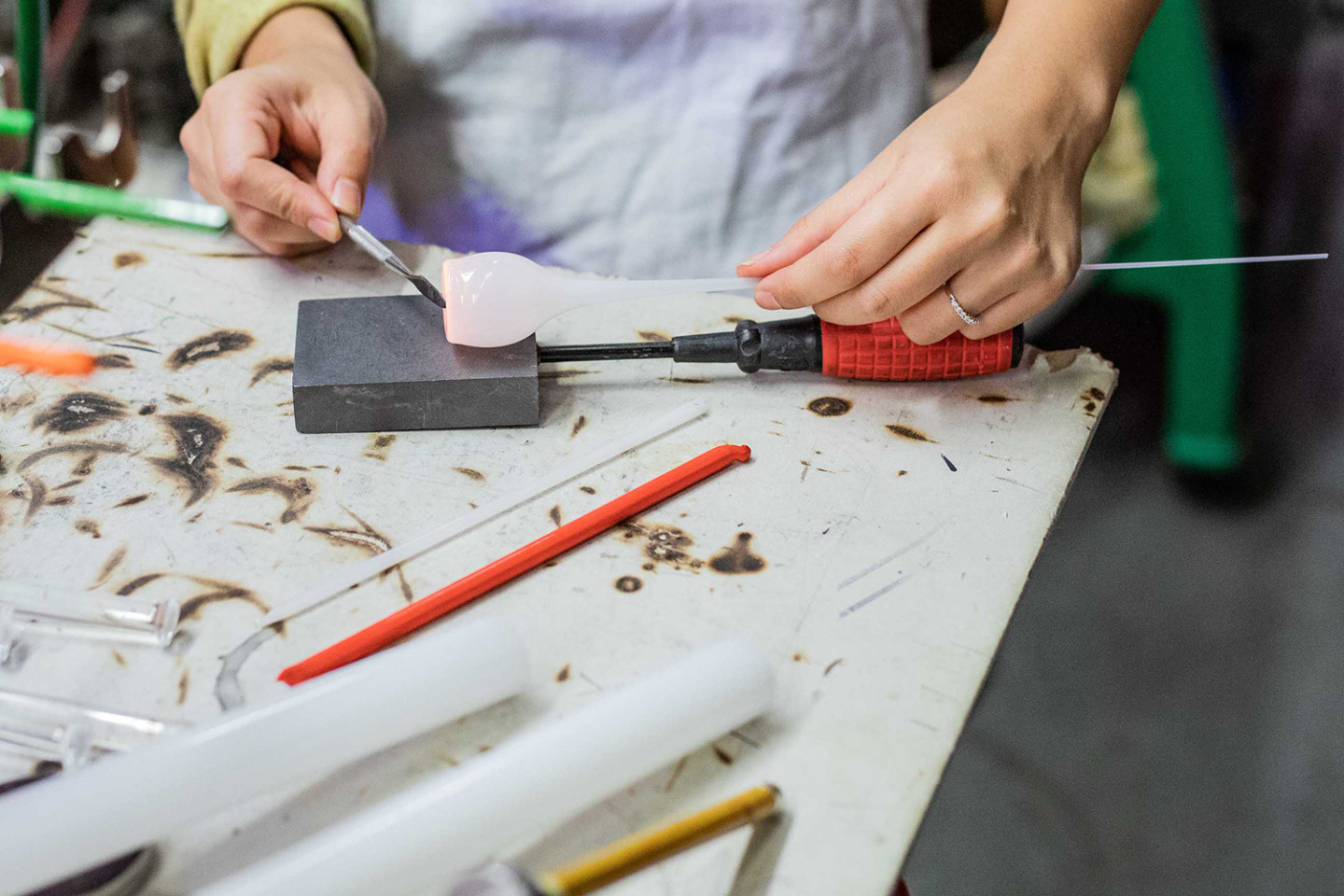
“My practice is a declaration of my place in history, and a radical act of decolonization through creating imagined futures,” you’ve quoted; You consistently employ the imagery of flowers as visual metaphors for Filipina women—colonized, commodified, and exotified bodies as you’ve described us to be—What sort of future do you envision blossoming for the Filipina woman from such a time as this? In this same vein, what does empowering the Filipina woman mean to you?
The past few days have been hard, as we’ve witnessed such a horrible act of violence against several Asian women. I think that healing will take a while, as violence against women of color has been around for such a long time. My work which attempts to address this trauma, reimagines existing stories (such as myths) that have long held power over us through their featured stereotypes. Women have been silenced for centuries; Asian women are particularly perceived as servile or obedient. Stereotypes exist for Filipina women who live abroad as well: one need only to look at the United States’ data on nurses’ deaths over the pandemic to see that a huge percentage of those nurses were Filipino. I hope that this time will strengthen us to rally and demand for a future where we’re not only heard, but acknowledged; a future where we’re valued and not treated as expendable. This could be an opportunity to rewrite what constitutes the “good” Filipina ideal. We should assert that Filipina women represented in the media mustn’t be immediately associated with a certain white-leaning type.
Empowering the Filipina woman means creating work that fights against oppressive acts and labeling—especially when our very own leaders subdue us. That, and my continued showcasing of narratives that frame Filipina women in positions of power, joy, and agency.
How has the experience of pursuing art in New York been so far? How different (or similar) is it from practicing art in the Philippines? What specific challenges have you faced as a Filipina immigrant worker trying her hand in the international art scene?
The place where you live and work always informs the context of your art practice. Before moving to the US, my work had addressed a lot of societal issues in the Philippines; and I often found them to be well received and understood quite well in my own country.
When I moved, I realized that a lot of people don’t really know much about the Philippines—which was all the more a worthy reason to pursue art elsewhere. As an immigrant, it constantly feels like you’re fighting to be understood; there’s this struggle to belong. I had to learn how to frame my own experiences (and culture) within the greater conversation of art in America.
Accessibility has always been a struggle for me, most especially in my first years as a working artist. Aside from having had less time in the studio, I found myself pouring tons of energy into jobs that supplemented my practice and materials. I would say it is getting better for me, but it is not without struggle. As a female artist of color (and an immigrant), I’ve found myself up against a lot of systemic racism in the academe and working world; even in the sphere of glass—Comments that include words like “primitive” or “exotic,” or even being encouraged to make work that embodies a certain role that certain people expect to see me play, are just some of the things I find very offensive. I deal with and counteract that trauma by creating scenarios where women are instead, victorious or empowered.
As it is not the typical route for most Fine Artists, what made you venture into design as a medium?
At that particular time, venturing into creating my own design line was a radical act against the roles I felt were assigned to me. Having moved to New York in the year 2015, I had to supplement my income by working several jobs.
In 2019, I had created an installation comprised of 40 glasses; once an assemblage entitled “Babae,” the artwork eventually evolved into the design line that my audience knows of today: bringing home a piece from my Barbae Collection is like owning an element of that artwork. Glass sculptures initially meant to be installed in a gallery setting, these vessels serve to be reminders of the greater issues at hand as they are plopped within the context of everyday life (and interiors)—In the case of this collection, beacons of women empowerment:
The glasses which come in an assortment of colorways and sizes, are representative of certain female figures that have inspired me—icons from history and pop culture whom I happen to admire. Having witnessed a horrific picture of women rebels being shot in the vagina on the news, I was roused to counteract something so demeaning and violent by depicting the vulva in an elegant and beautiful way.
So, you’ve independently opened shop under your studio; what inspired you to do so?
As I was working part-time in retail whilst creating “Babae,” I was extremely frustrated with the job market—especially in relation to the art world. It seemed like the common path was to first start out as an unpaid intern, which by the way excludes a huge chunk of applicants who simply don’t have the means to do so. At the time, it seemed like the only ones getting the well-paying jobs were those who were well connected—like if you happen to be the nephew of someone big in the industry. The roles left for the taking either paid very little, or at worst: in the form of “exposure.” When I exhibited “Babae” that year, I noticed that people were excited to purchase the glasses in my installation; that was what encouraged me to pursue the line.
I liked the idea of working for myself while still having the glasses as part of the larger context of my practice—one that fuses sculpture, installation, and performance. Through the help of Lohar Projects (an art advising company), I was able to reframe my artist statement to suit the needs of my online design shop. I did this all very consciously over a long period of time, as it took a while to gather enough money so I could build and make this project happen. Meeting other self-employed women entrepreneurs really inspired me to make this move. The restlessness I had felt at my day jobs served to be this constant reminder that being in the studio is still the best way for me to find fulfillment—to make use of my skills even if this meant devoting a portion of my studio time to design production. Now, I have a small and wonderful global team that allows me to keep the shop running transnationally.
I’ve since been so grateful for all the support the Barbae Collection has received. Emerging artists need to wear many hats in order to make a living, and we must never be ashamed to do so.
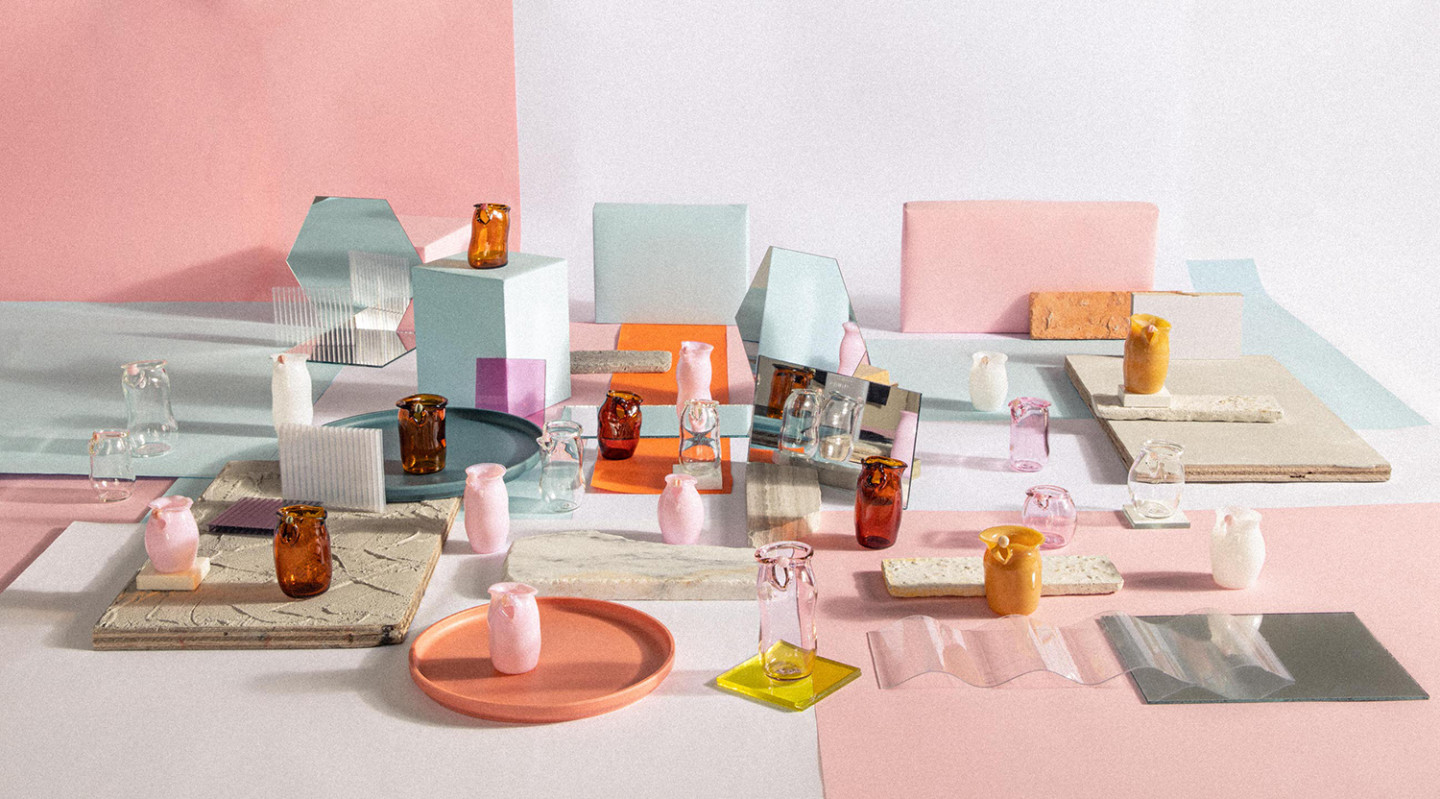
Barbae Collection from Goldie’s Design Line, Barbae Glass. Images — Everywhere We Shoot
What does your usual work week look like? Maybe describe a typical day at the studio.
Since the pandemic started, I’ve been working from home; which is now in the Financial District in Manhattan. A few days a week, I commute to Brooklyn Glass or Urban Glass in Brooklyn where I rent the equipment I need to create my glass sculptures. I specialize in a technique called glass flameworking, which involves the use of a torch to bend and shape glass. I usually balance my time in the studio between working on my studio practice, creating pieces for my shop, and fulfilling orders. I definitely feel lucky to have this during a time when so many people are unemployed. When I have to be in the glass studio on a certain day, I’m usually just there entirely; it’s a full day affair. As sculpting glass is very physical, the day leaves me with very little energy to do anything else. When I’m working from home, I normally start my day in a slow-paced manner—a time where I typically have room to exercise or meditate. By noon, I am usually writing, applying to grants, photographing work, or focusing on marketing. I recently did a collaborative performance that I filmed and recorded via Zoom; it makes me happy to know that there are still ways to work from home as an artist. It’s important to take a day off for yourself though—as one cannot create from an empty tank. Once a week, I like to go for a walk to enjoy the city with the people I love.
Having pulled some of the insightful statements that you’ve shared over the conversation,
“I have begun to focus inward by taking a hard look at the work I have done in the past years, and trying to assess what works for me going forward. As artists, I believe we have to ask ourselves new questions during this time. The world has changed, and so has its needs. Writing is a part of my practice, and it helps me approach making from a point of awareness and intention. It is a good time to review and rethink the structures of our industry. Whatever we had before is not working, as we now realize.”
What do you concurrently take away? What has changed or evolved in you (as an artist) over the course of the pandemic?
In the wake of this outbreak, I’ve since been determined to work hard so that I can spend most of my time creating my art—whether that be through my studio practice or through my design line. My work is a part of who I am – the message I want to leave when I’m gone; this pandemic has made me realize that life is so precious and that our time here is limited. I’d like to work with glass for as long as my body and health permits. If we are able, we must devote our time being with the people we love; to doing the things we love. Before the pandemic, I would always tell myself “Oh, I can always watch that in the future, or make that next month.” Now, I know that if we have the health, the means, and the drive to create something, then we should—because you never know when we’ll be ordered to stay at home again. Last year, I wasn’t able to work in the glass studio for five months straight. This year, I feel a renewed sense of purpose in my studio, and I’m excited to share and make new work that continues to empower women.
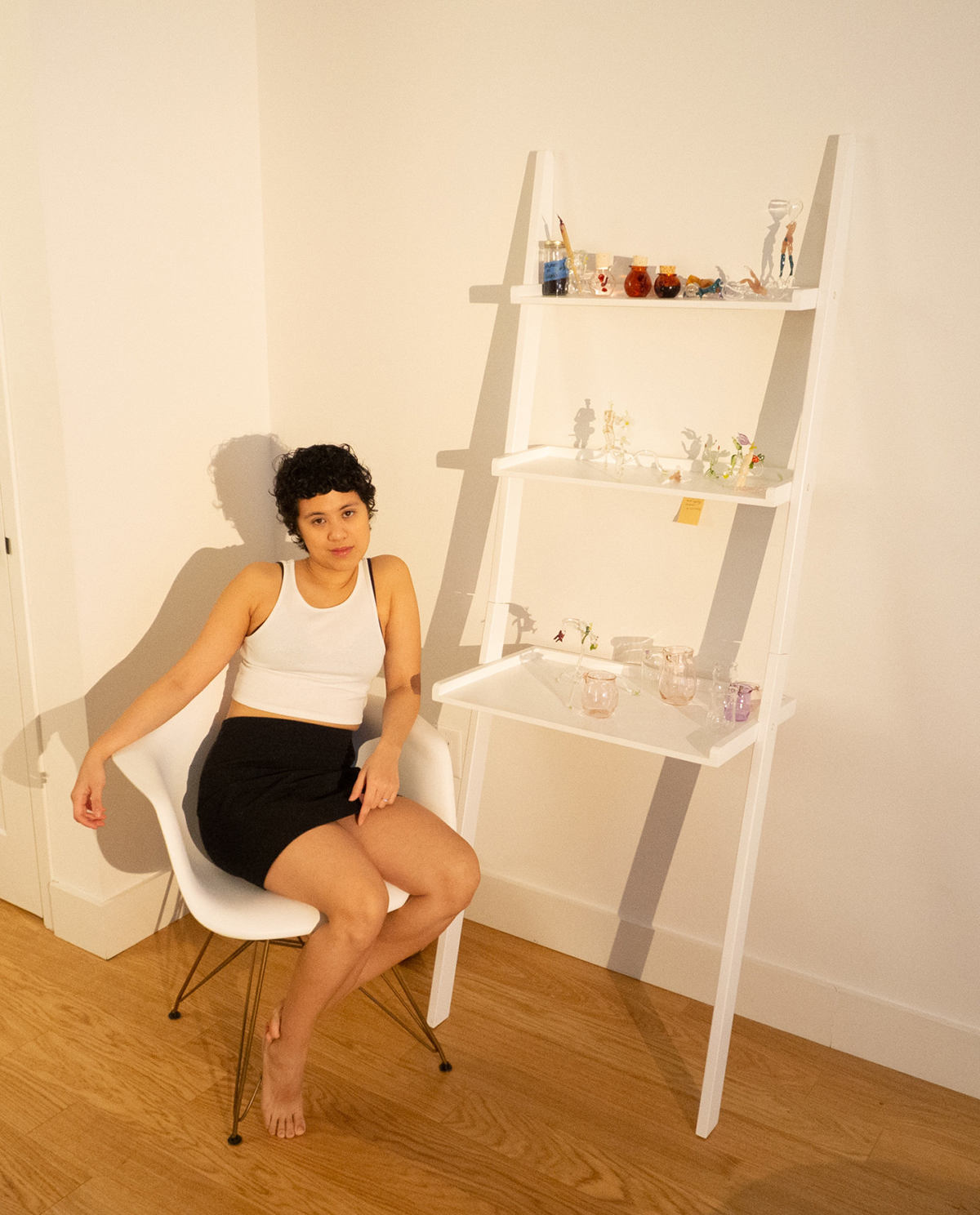
Lastly, what would your message be to aspiring Filipina artists?
Take no BS, and aim as high as you want. Don’t listen to people who warn you about your path being too hard—that the medium you’re inclined to using is too rare or difficult to pursue. Explore as many mediums as you can, and read everything with a voracious curiosity. When you find what it is that sets you on fire, stick to it and be disciplined, because great art takes hard work. Be patient when you fail, and believe that your voice matters. If you’re afraid of what that would mean in terms of financial stability, then you are within reason, but it is definitely not impossible. Know that it is better to start small and work your way up; even if that means supplementing your income with other jobs or wearing many hats to begin with. Also, as much as possible, don’t work for free (or for the sake of exposure), as this only perpetuates a cyclical culture that negatively affects artists. Know your value, and ask for it. There is value in the work you are set out to do; seek your truth, and don’t be afraid of failure.

